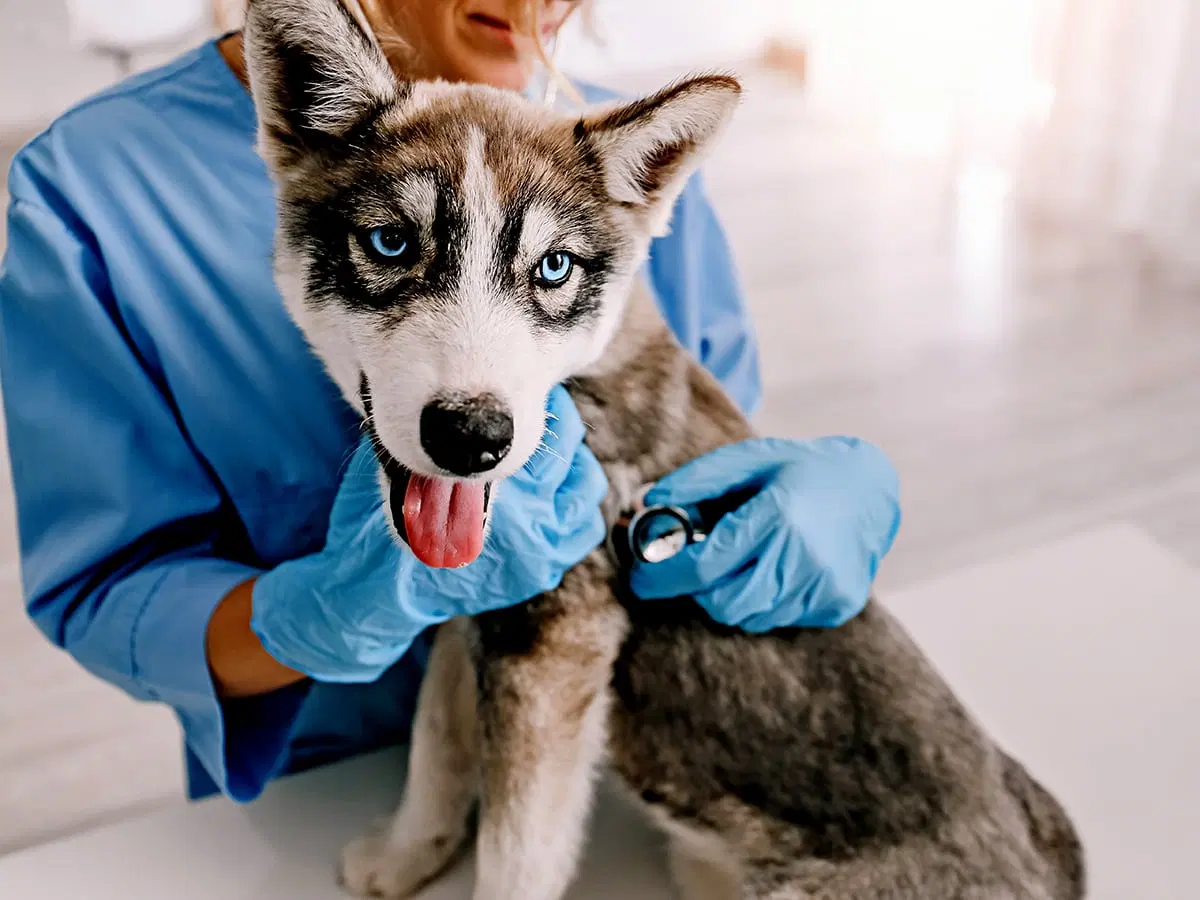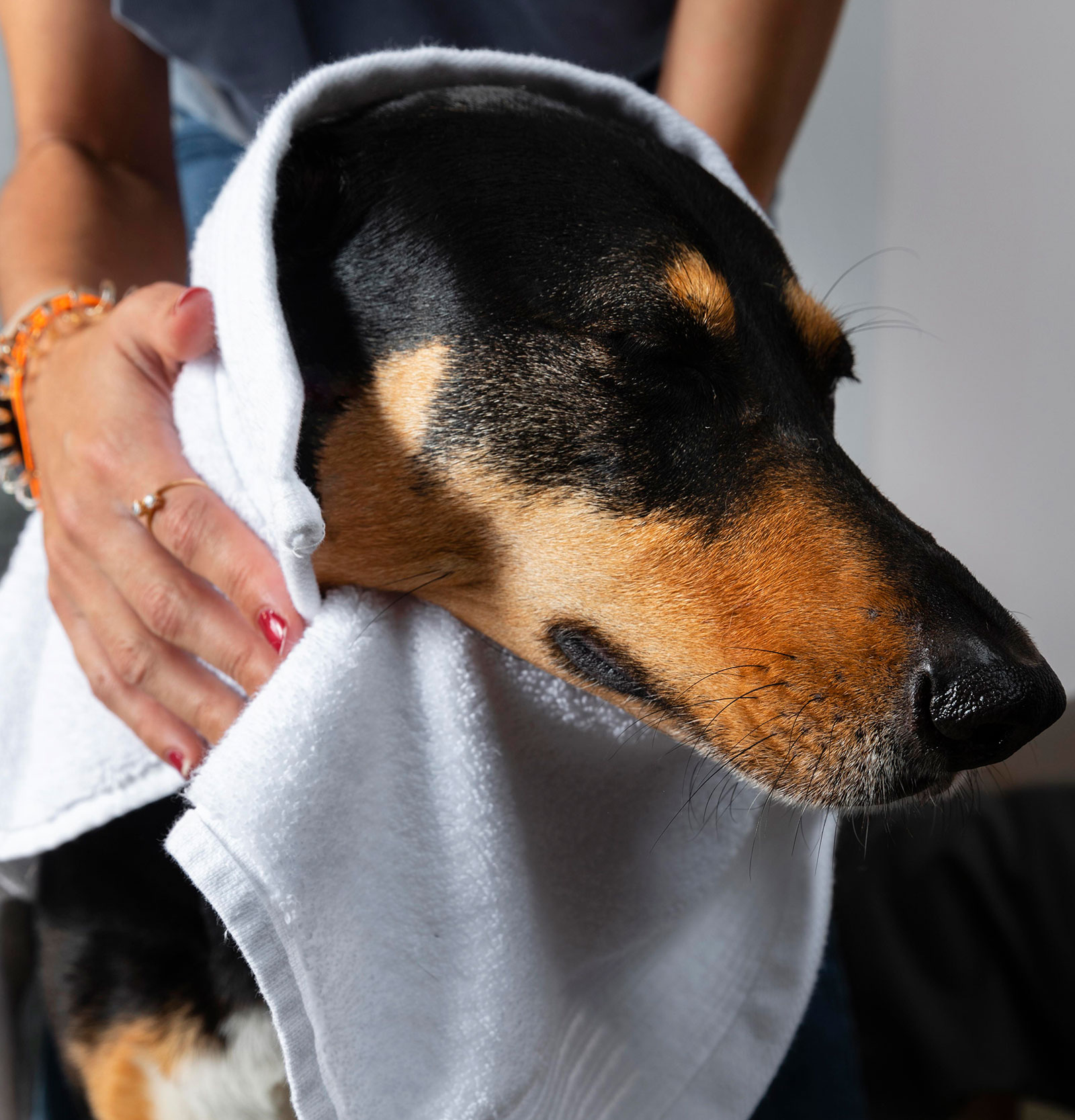Cruciate Ligament Rupture in Dogs – The most prevalent orthopedic condition affecting dogs is a cruciate ligament rupture. This injury, akin to an ACL tear in humans, can lead to lameness and pain and potential long-term mobility problems with delayed intervention. Understanding the causes, signs, and treatment options for cruciate ligament rupture in dogs is important for owners to facilitate their dog’s comfort and health in the long run.

What is a Cruciate Ligament Rupture?
Dogs have a ligament in their knee called a cranial cruciate ligament (CCL), just like humans, they also have anterior cruciate ligaments (ACL). These ligaments stabilize the knee joint, or stifle. The CCL stabilizes and prevents forward movement of the tibia (shin bone) relative to the femur (thigh bone). A rupture, or tear, of the CCL means the tibia can move forward about the femur, creating an unstable joint, pain, and inflammation. Cruciate ligament ruptures in dogs can occur as an undesired traumatic injury or appear gradually, particularly in degenerative particularly with age and wear over time.
Some breeds are more prone to developing cruciate ligament rupture (i.e., Cavalier King Charles Spaniel, Rottweiler, Labrador Retriever, etc.). Those dogs that are overweight commonly develop cruciate ligament ruptures. Dogs that are very active or older pets may suddenly rupture a cruciate ligament during exercise, while a gradual rupture may elicit just a change in exercise tolerance or difficulty with certain movements.
Causes of Cruciate Ligament Rupture in Dogs
Various factors can be responsible for rupturing a dog’s CCL-
Degenerative Changes – With time, the ligament may weaken, specifically in older or overweight dogs, making it more likely to tear.
Genetics – Some breeds, like Labrador Retrievers, Rottweilers, Boxers, and Newfoundlands, are genetically predisposed to CCL injuries.
Fatness – Extra body weight puts additional stress on joints, increasing the risk of rupture.
High-Impact Activity – Sudden stops, jumps, or turns throughout play or exercise can lead to ligament injury.
Poor Conditioning or Muscle Imbalance – Weak muscles around the knee joint can increase the chance of ligament damage.
Signs of Cruciate Ligament Rupture
The signs of a CCL rupture can range from subtle to severe, depending on the extent of the injury. Common signs include –
- Limping or favoring one leg
- Stiffness, specifically after rest
- Swelling around the knee joint
- Difficulty in standing or walking
- Audible clicking or popping sound in the knee
- Reluctance to jump or play.
Sometimes, dogs with partial tears may show only intermittent signs of lameness, which may worsen with time if left untreated.
Diagnosis and Treatment Options
To diagnose a cruciate ligament rupture in dogs, veterinarians mainly perform –
- A physical exam, including particular manipulations of the knee.
- X-rays to check for secondary changes like joint swelling or arthritis.
- In some situations, MRI or arthroscopy may be utilized for more detailed imaging.
Treatment Options
Treatment for a CCL rupture relies on the seriousness of the injury and the dog’s age, size, activity level, and overall health.
1. Surgical Treatment
Surgery is typically the suggested treatment for dogs with full tears or large, active breeds. Some surgical techniques include –
TPLO (Tibial Plateau Leveling Osteotomy) – Changes the angle of the knee joint to balance it.
TTA (Tibial Tuberosity Advancement) – Alters the mechanics of the knee to decrease the need for the CCL.
Extracapsular Repair – Includes using a synthetic suture outside the joint to mimic the function of the torn ligament, mainly used in smaller dogs.
2. Conservative Management
For smaller dogs or those not suited for surgery, a non-surgical approach may be considered. This can include –
- Weight management
- Physical therapy
- Anti-inflammatory medicines
- Joint supplements
- Restricted activity
While conservative treatment can relieve symptoms, it may not prevent long-term joint damage or arthritis.
Recovery and Rehabilitation
Recovery after surgery mainly takes about 8 to 12 weeks. During this time, strict rest and controlled activity are important. Physical therapy, including underwater treadmill exercises and massage, can significantly improve recovery results. Dogs managed non-surgically may take longer to regain mobility and are at higher risk of developing arthritis or tearing the ligament in the opposite leg.
Long-term prognosis is generally good for dogs that undergo surgery, specifically with proper rehabilitation and weight management.
Preventing Cruciate Ligament Injuries
Even though not all cases can be prevented, there are many steps pet owners can take to reduce the risk –
- Maintain a healthy weight for your dog
- Offer regular, low-impact exercise
- Avoid sudden intense activity, specifically in older or overweight dogs
- Consider joint supplements with glucosamine and chondroitin for added joint support
- Visit for regular veterinary check-ups to observe joint health
Long-Term Results and Quality of Life
With prompt treatment and care, several dogs go on to live happy, active lives after a cruciate ligament rupture. Surgical intervention, specifically when combined with a structured rehabilitation program, provides the best chance for full recovery. Even in cases managed safely, improvements in mobility and comfort are possible all dedication and continuous home care. Monitoring your dog’s weight, maintaining joint health through supplements, and engaging in regular low-impact exercise can all contribute to better long-term results and help prevent future injuries.
Conclusion
A cruciate ligament rupture in dogs is a severe orthopedic issue that can significantly impact your pet’s mobility and quality of life. With early diagnosis, appropriate treatment, and good aftercare, most dogs can recover well and return to their normal life activities.
If you are searching for expert help or want to learn more about caring for your pet’s health, visit Pet Care Partners, a trusted veterinary wellness center.
FAQs
Can a dog live with a torn cruciate ligament without surgery?
Yes, some dogs, specifically small, older, or less active ones, can live with a torn cruciate ligament using conservative management. However, surgery is mainly the best option for restoring mobility and reducing long-term joint damage.
Is a torn cruciate ligament in dogs an emergency?
While it may not be a life-threatening emergency, a CCL rupture needs proper veterinary attention to prevent further damage, pain, and arthritis. Early detection often leads to better results.
Can a dog tear the cruciate ligament in both knees?
Yes, unluckily, it is common for dogs to tear the cruciate ligament in both knees, either simultaneously or within a year of the first injury. Complete rehabilitation and weight management can help reduce the risk.




